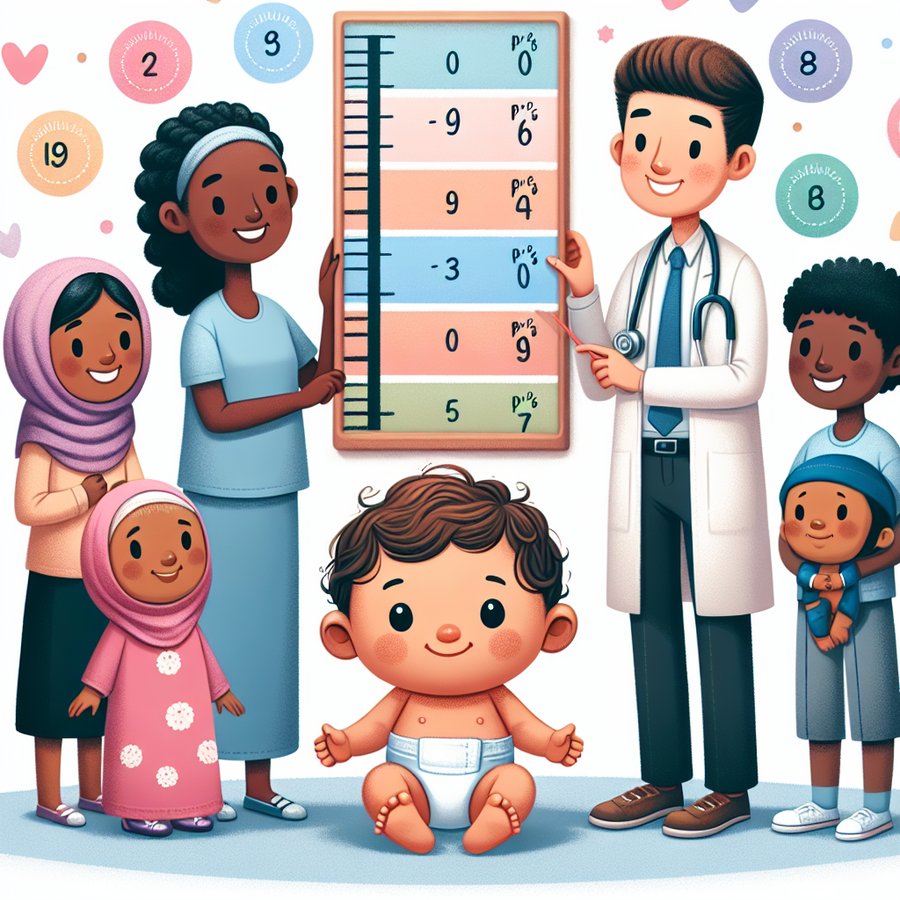Understanding baby growth percentiles from the get-go can seem like deciphering a secret code. It’s a topic that often leaves parents both curious and sometimes anxious. As a new parent myself, I remember looking at the growth chart the pediatrician handed me and wondering what all those numbers and lines meant. Were they just numbers, or did they hold the key to understanding my baby’s health and development? Let’s unravel this mystery together, as I share not just the facts but also personal anecdotes that might just make the journey a bit more relatable for you.
What Exactly Are Baby Growth Percentiles?
At its core, understanding baby growth percentiles is about knowing how your baby’s physical growth compares with that of other babies of the same age and sex. The World Health Organization (WHO) and the Centers for Disease Control and Prevention (CDC) provide growth charts that pediatricians use to plot a baby’s weight, length, and head circumference. This plotting gives a percentile ranking, ranging from the 1st to the 99th percentile. If your baby is in the 50th percentile for weight, for instance, it means they weigh more than 50% of babies of the same age and sex, but less than the other 49%.
When my little one was marked at the 25th percentile for weight, I initially panicked. Did this mean she was undernourished? My pediatrician, sensing my concern, explained that as long as she followed her growth curve consistently, there was no need for alarm. This personal reassurance was a turning point for me, highlighting the importance of trends over time rather than a single percentile ranking.
Why Is Understanding Baby Growth Percentiles Important?
Tracking your baby’s growth percentiles is more than just a routine part of pediatric visits; it’s a crucial aspect of monitoring their overall health and development. These percentiles help identify potential health concerns early, such as undernutrition or obesity, and can also indicate if a baby is growing too slowly or too quickly. Being informed about your baby’s growth pattern enables you to take proactive steps in consultation with your healthcare provider if needed.
But remember, these percentiles are not meant to be a competition. Each baby grows at their own pace. My niece, for instance, remained consistently in the lower percentiles for her first year but was meeting all her developmental milestones. She was simply following her own unique growth path, and today, she’s a thriving, energetic toddler.
How Do You Interpret Baby Growth Percentiles?
Interpreting baby growth percentiles involves looking at your baby’s growth over time. A single measurement tells us little, but tracking these measurements over months can reveal a trend. Your pediatrician will look for consistent growth along a percentile curve. Significant deviations from this curve might prompt further investigation, but minor fluctuations are typically nothing to worry about.
It’s also essential to consider that growth spurts and plateaus are part of normal development. There were times when my baby seemed to pause in growth, followed by a sudden jump in percentile ranking. These changes were always fascinating reminders of the unique pace at which each child develops.
Understanding Baby Growth Percentiles: What Should Parents Do?
First and foremost, keep regular appointments with your pediatrician and ensure your baby’s growth is tracked on the appropriate growth chart. If there are any concerns about your baby’s growth percentiles, your pediatrician will discuss these with you and suggest any necessary actions or tests.
At home, focusing on providing a balanced diet and a stimulating environment can support your baby’s healthy growth and development. Activities that promote physical, cognitive, and emotional development are also beneficial. For instance, engaging in activities to promote empathy and social understanding, or fostering touch and sensory experiences, can be just as important as nutritional intake.
Understanding baby growth percentiles is a journey, one that comes with its highs and lows. It’s a tool, but not the only measure of your baby’s health and happiness. And as I’ve learned, sometimes the best thing you can do is to trust in your baby’s unique path of growth, supported by the guidance of healthcare professionals. Remember, every baby’s story is different, and these percentiles are just one part of the beautiful narrative of their early years.
Through my journey, I’ve found immense value in resources that complement the understanding of growth percentiles, such as guides on supporting emotional development, or how to encourage independent play in a 1-year-old. Diving into these topics has enriched my experience as a parent, and I hope it does the same for you.













